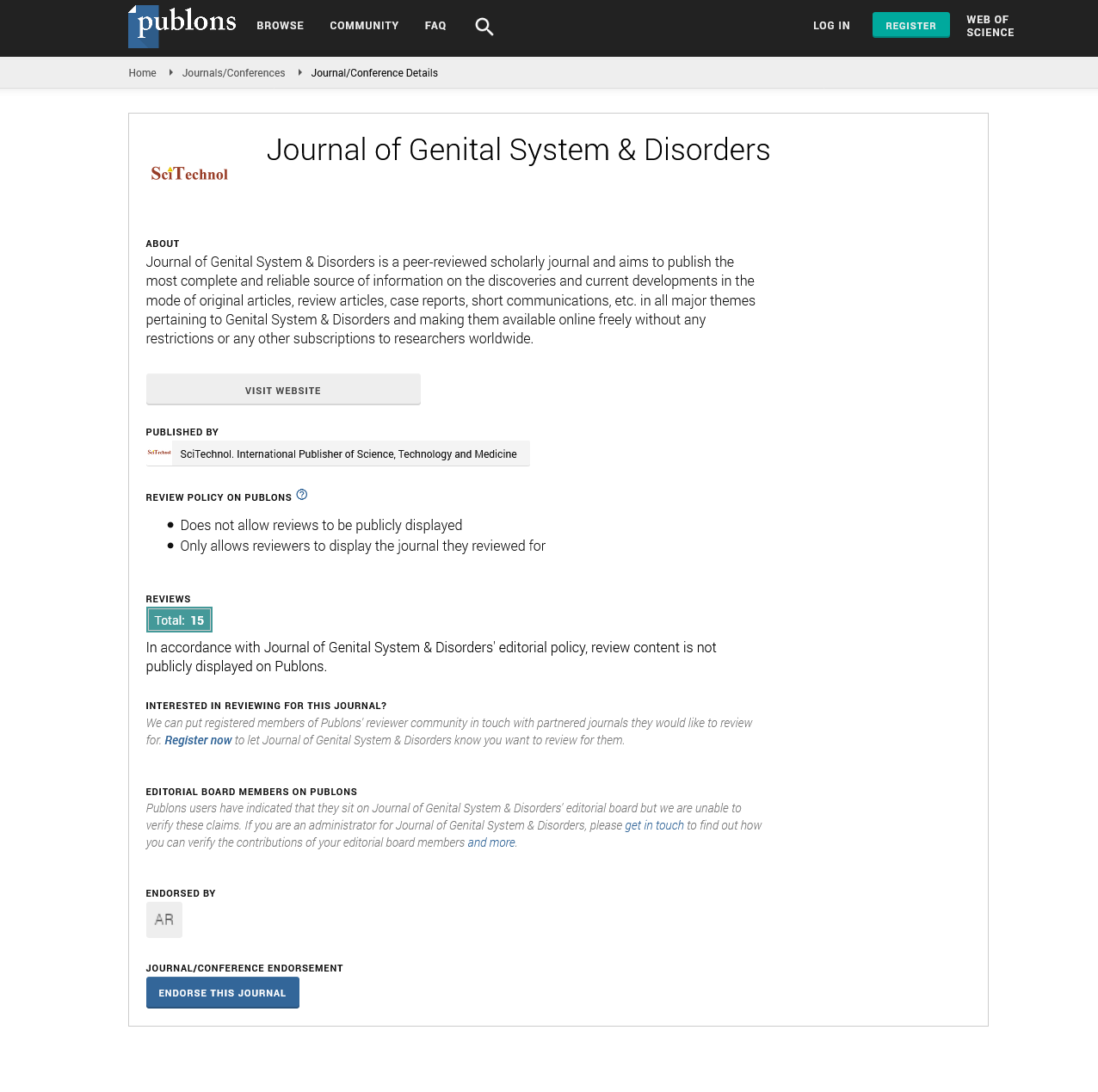Opinion Article, J Genit Syst Disord Vol: 12 Issue: 2
Interpreting Birth Defects: Comprehensive Analysis of Congenital Anomalies
Ruth Gail*
1Department of Medicine, McMaster University, Hamilton, Canada
*Corresponding Author: Ruth Gail,
Department of Medicine, McMaster
University, Hamilton, Canada
E-mail: gai.ruth@mcmaster.ca
Received date: 22 May, 2023, Manuscript No. JGSD-23-107309;
Editor assigned date: 24 May, 2023, PreQC No. JGSD-23-107309 (PQ);
Reviewed date: 08 June, 2023, QC No. JGSD-23-107309;
Revised date: 16 June, 2023, Manuscript No. JGSD-23-107309 (R);
Published date: 26 June, 2023 DOI: 10.4172/2325-9728.1000282
Citation: Gail R (2023) Interpreting Birth Defects: Comprehensive Analysis of Congenital Anomalies. J Genit Syst Disord 2023, 12:2.
Description
Congenital anomalies are structural or functional abnormalities that occur during foetal development and are present at birth. They can affect any organ or system in the body and may vary in severity, ranging from mild and inconsequential to life-threatening conditions. Congenital anomalies can result from genetic, environmental, or multifactorial causes.
Etiology of congenital anomalies
Congenital anomalies can arise from various factors, including genetic abnormalities, chromosomal disorders, environmental exposures, maternal health conditions, and a combination of genetic and environmental influences. Genetic anomalies can result from mutations, deletions, or duplications in the DNA sequence, while chromosomal disorders involve structural or numerical abnormalities in the chromosomes. Environmental factors, such as maternal infections, teratogenic exposures, maternal substance abuse, or maternal medical conditions, can also contribute to the development of congenital anomalies.
Classification and types of congenital anomalies
Congenital anomalies encompass a wide range of conditions affecting different body systems. They can be classified based on the affected organ or system, the timing of onset during embryonic development, or the underlying etiology. Common types of congenital anomalies include neural tube defects, congenital heart defects, cleft lip and palate, limb abnormalities, gastrointestinal abnormalities, urinary tract abnormalities, and chromosomal disorders, among others. Understanding the classification and patterns of anomalies helps guide diagnostic evaluation and management.
Diagnostic approaches
The diagnosis of congenital anomalies involves a multidisciplinary approach and may include prenatal screening, imaging studies, genetic testing, and clinical evaluation. Prenatal screening techniques, such as ultrasound examinations and maternal serum screening, can help identify structural abnormalities or potential risk factors during pregnancy. Genetic testing, including chromosomal analysis and molecular genetic testing, aids in identifying specific genetic or chromosomal anomalies. Postnatal clinical evaluation, including physical examination and medical imaging, further contributes to the diagnosis and assessment of the severity and impact of the anomalies.
Management and supportive care
The management of congenital anomalies depends on the specific condition and its associated challenges. Treatment options may include medical interventions, surgical procedures, rehabilitation therapies, and supportive care. Early intervention and coordinated care involving a multidisciplinary team are essential for optimizing outcomes and providing appropriate support to affected individuals and their families. Genetic counseling, psychosocial support, and access to community resources are also crucial components of comprehensive care for individuals with congenital anomalies.
Prevention and public health strategies
Preventing congenital anomalies requires a multifaceted approach, including public health initiatives, education, genetic counseling, and prenatal care. Strategies to reduce the risk of congenital anomalies include prenatal supplementation with folic acid, immunization, avoiding teratogenic exposures, and managing maternal health conditions. Additionally, surveillance systems, research, and public health policies play significant roles in monitoring and addressing the prevalence, impact, and outcomes of congenital anomalies.
Conclusion
Congenital anomalies encompass a diverse range of structural or functional abnormalities present at birth, with various genetic, environmental, and multifactorial causes. Understanding the etiology, classification, diagnostic approaches, and management strategies is crucial for healthcare professionals to provide accurate diagnosis, appropriate interventions, and supportive care for affected individuals and their families. Continued research, prevention efforts, and comprehensive healthcare services contribute to improved outcomes, quality of life, and well-being for individuals with congenital anomalies.
 Spanish
Spanish  Chinese
Chinese  Russian
Russian  German
German  French
French  Japanese
Japanese  Portuguese
Portuguese  Hindi
Hindi 
